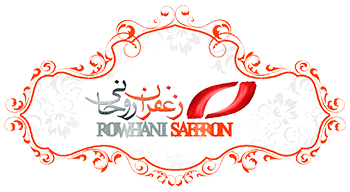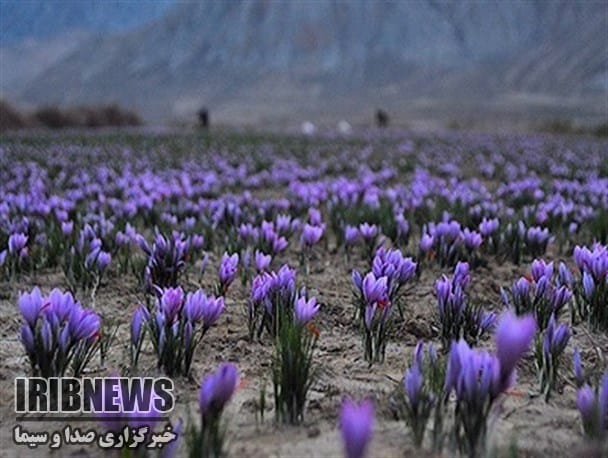How many saffron each 1 kg of saffron flower?
Planting saffron in Iran is 3,000 years old. This plant is colorful and precious, it has no stems and it has onions, and because it is in the desert, it is famous for red or gold.
Because of its great taste and color and aroma, saffron has many uses in the production of food, pharmaceutical and chemical products, and it is expensive due to the limited cultivation and production, and its similarity to gold, apart from the price, is that farmers of every 150 flowers, One gram of saffron and about 147 thousand fresh flowers, one kilo of dried saffron. This point also makes it subject to various fraudulent practices, in particular the fact that the identification of saffron is not a simple principle of fraud and requires several principles. Let’s get acquainted with some of these principles while familiarizing with saffron market.
Survey Look
One of the easiest ways to recognize saffron is its appearance. To do this, you should also pay attention to a few points; the points that will provide you with the basic diagnosis of saffron at a glance.
The shape of the strings: The flower of safflower is the most common case of saffron falsification, and even some people give it the name of artificial saffron. Kernel corn and even string fillets, stained with saffron paint, are also examples of saffron cheating. To determine the saffron, the principle must be that saffron is the principle of the shoots and pins, which is narrower in the upper part and in the lower parts. In general, the shape of saffron is similar to a carnation, such that the bottom of the tree and the ends of it are toothed, flattened and scissors shaped.
Stomachs: One of the other ways to cheat in saffron is to spray it with some kind of fat, sugar, salt or honey to increase its weight and add artificial color to it. If the saffron stigmas are shiny, you should doubt it. To ensure its authenticity, after seeing this abnormal appearance, shake some saffron between fingers or on paper. If after rubbing the paper or finger is rubbing your hands, make sure that the saffron is impregnated with fat or other materials to add weight.
Color: One of the easiest ways to distinguish the original saffron is its color at a glance. The color of the saffron should be steep red, and if you encounter a saffron that has a bright golden or red color, know that your choice saffron is fake.
Sex examination
If you do not get the correct result by looking at the appearance, there are other tricks that you can probably diagnose by using them. The content survey includes the taste and smell of saffron, which can be easily examined at the same store.
Taste: One of the ways to recognize saffron is its tasting. The original saffron is, unlike its appearance, bitter taste. If you feel like this, surely your chosen saffron is fake. If you feel like a sweet taste or bitter taste, or if you find that the saffron is a bit oily, if you feel bitter with taste, know that your choice saffron has impurities and cheaters to increase the weight of saffron by using saffron to impregnate with fat, sugar or salt, and Or adding honey to it, they intended to add weight.
Odor: Smell of saffron is one of the most familiar odors. The flower of saffron also has a fresh, spicy smell. If your selected saffron has a bit of smell, consider this a sign of aging or grossness.
Additional study
Most manufacturers of fake saffron use packaging that does not have the full specifications of the manufacturer, which is why, first of all, at the time of purchase, information such as the full address of the factory, telephone number, manufacturing license number, name and business registration, production or production series, Date of production and expiration, net weight, type and grading of saffron, standard mark and approval mark of the Ministry of Health on packaging. Of course, many want saffron just for their color, for this reason they even want to use a substance called “saffron color” which is cheap. It has become one of the main ingredients of some restaurants in recent years.
The color of saffron, which comes mainly from Saudi Arabia to Iran, not only does not have any properties of saffron, which is carcinogens due to the presence of chemical dyes in its original structure. Interestingly, the materials used to make these colors are placed on the cans, one of the most dangerous of which is “Tartrazine”. The use of this substance involves diseases such as hyperactivity in children, gastrointestinal and asthmatic problems, thyroid tumors, migraine exacerbations, blurred vision, sensitivities and skin problems such as purpura. If you plan to buy saffron in a massive amount or you will be given as little as a small test for the opportunity to buy, our suggestion is to throw saffron in hot water and place it on the heat.
If you dissolve it in water: pure saffron, if dissolved in water, turns yellow, but false saffron creates a red or orange ghost in water due to all the substances that are added to produce natural form or weight.
If you put it on heat: pure saffron, depending on the potassium that differs in different saffron types, is turned into violet or orange in the heat, but the saffron of cheating is affected by yellowish heat.
Iran with the average production of 100 tons of saffron per year, has the world’s first position. The main cultivation center of this plant is the desert and lowland areas of southern Khorasan, with a history of saffron in this region to 700 years ago. After our country, Spain with a production of 25 tons was the second and India, Spartan islands of Russia, Singapore, Malaysia, Japan, Taiwan, China, France, Italy, Germany, Australia and Greece.
Iran with the average production of 100 tons of saffron per year, has the world’s first position. The main cultivation center of this plant is the desert and lowland areas of southern Khorasan, with a history of saffron in this region to 700 years ago. After Spain, Spain, with an average production of 25 tons, ranked second and India, Spartan islands of Russia, Singapore, Malaysia, Japan, Taiwan, China, France, Italy, Germany, Australia and Greece with an average production of less than 25 tons, total third place Are assigned to themselves.
Familiar with the Flattery!
Saffron flower consists of 2 parts of stigmas and cream. The stigma is actually a red part of saffron and cream, its white part. The saffron is divided into several major categories based on the shape of the stigma and the percentage of cream in it:
Negin: In this type of saffron, 3 threads of the stitch are connected, which makes the strings of the stitches collar in order to make them appear both more beautiful and more voluminous. For this reason, this type of saffron has better market opportunities than other types of products, and of course it is more expensive.
Saffron Searl: In these saffron, the cream is completely removed and pure saffron is obtained. This type of saffron is called Sargol, Sarkhmam, Sarehshshh and privilege (cut saffron), the fracture between the fields is not seen, and in the international language they call saffron coupe.
Shallah saffron: In this type of saffron, the cream is removed from the flower, and therefore the stigmas have 1 to 3 millimeters of cream. Some consumers like this kind of saffron more because of the connection of the stigmas to the cream, which is a reason for the authenticity of saffron.
Saffron Category: This kind of saffron contains stitches plus 4 to 5 mm of cream. Strings are categorized into two facial and two-way shapes. In the Texuyah model, the creams are on top of each other and the stitches are placed on each other, but in the double-sided model, we try to place the stitches on the two sides and the creases in the middle of each other. In this model, the stitches in the middle of the stomach attract more attention. In the meantime, because the classification is carried out by women, it is called the “Girlfriend”.
Cranberries or white whites: When they cut the sprout from the bunch, the root or white part, which is said to be saffron in Iran, is a saffron that can not be considered saffron. This part is known as “white” or “style” in Europe.
Cropping, Selling to Asghall
If you are looking for a commercial price for saffron, you will be faced with a price of about 7 million for each kilo of saffron. But if you even have cooking time together with your mother or spouse, you will find that when you use this item you do not have a discussion about kilo, and you will be able to talk with less than warmth and meghall. Each gram of first-rate saffron in the market price is about 8 thousand tomans. But if you have half-warm packing, you can get it at a price of 3800 to 4200 tomans. The price of saffron packaging is about 2 grams or according to the people of the fan, the semitrailer is at least 15 thousand tomans. 3 grams of saffron costs between 20 and 25 thousand tomans. Finally, each meal of first grade saffron is an average of 30 thousand tomans. But if Mashhad or religious buildings you want as a souvenir or gift saffron, you fancy box 1/5 grams 12 dollars, half a shekel 17 dollars, 3 g 28 dollars an ounce 35 thousand dollars, 2 pieces of 70 thousand dollars and 5 ounces 170 dollars price. If you also want to buy Kili, it’s good to know that the first-class exporter of saffron has reached $ 7 million a kilo. But white or rosemary saffron is still available at a price of less than 3 million tomans.
A different proposition is the saffron spray; the new product market that combines saffron and drinking water with the help of nanotechnology makes it possible to use the most economical form without needing to satiate and brew it.
source: hamshahrionline /ir







Get Social